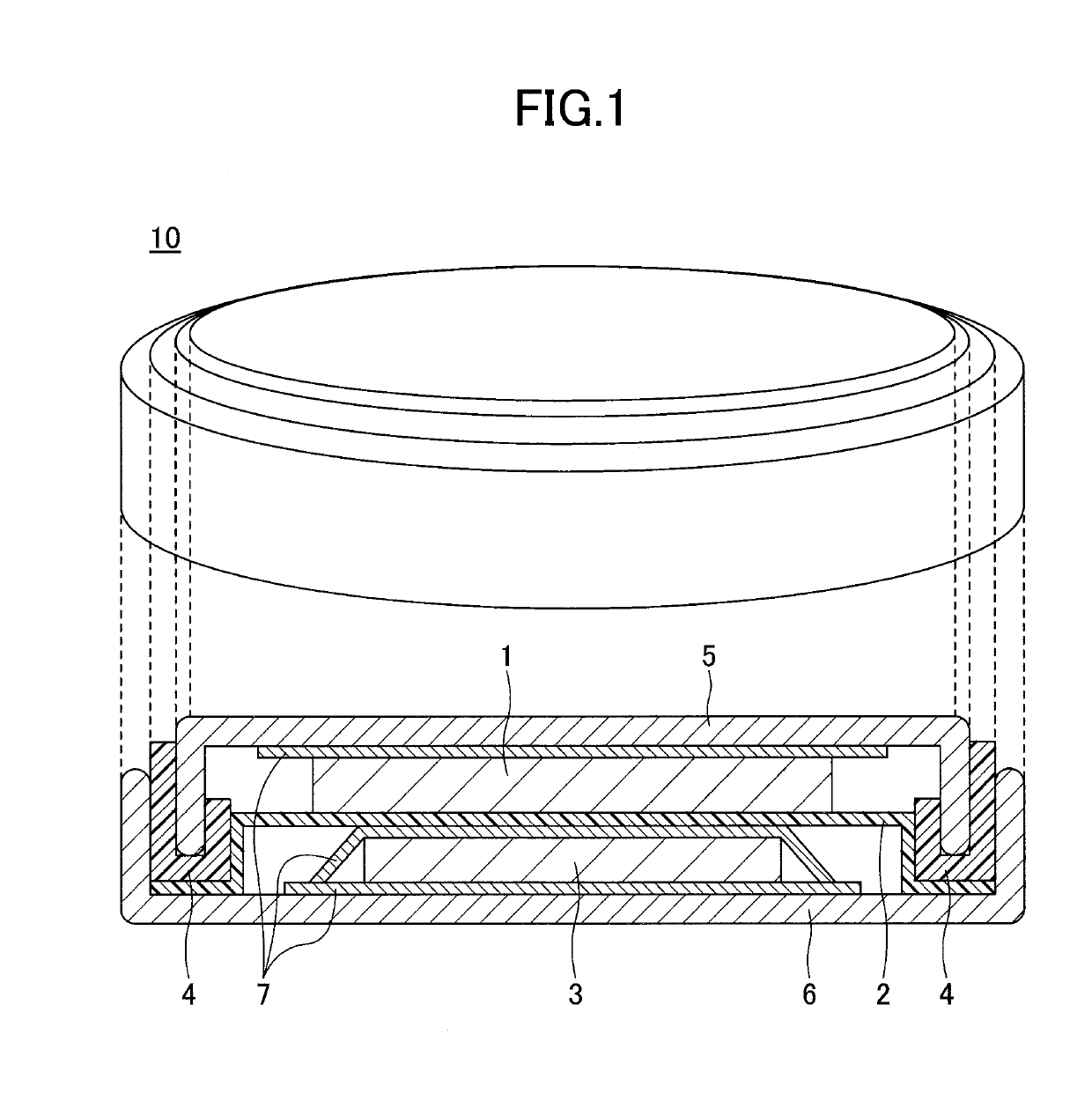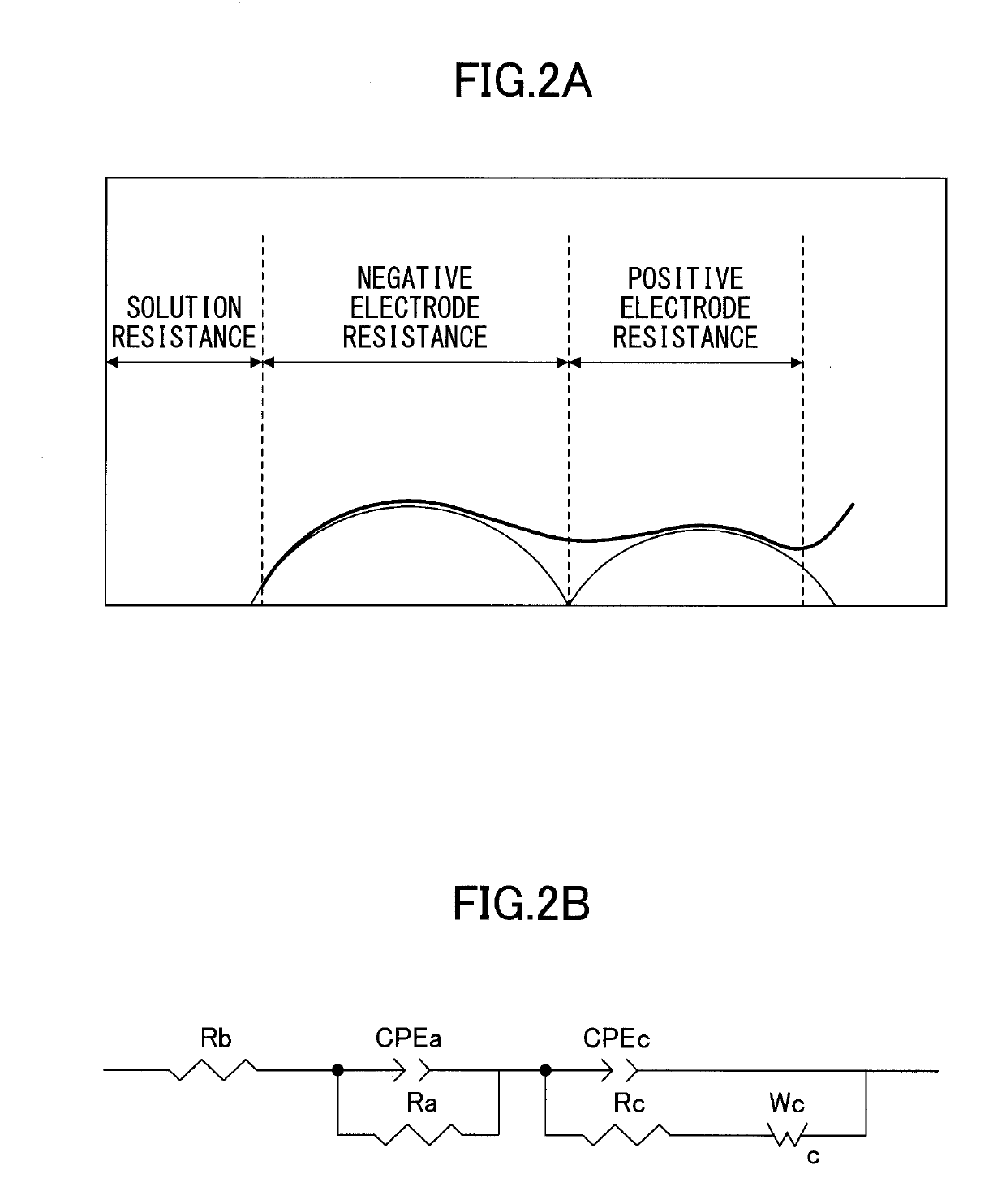Positive electrode active material for nonaqueous electrolyte secondary batteries and method for producing positive electrode active material for nonaqueous electrolyte secondary batteries
a technology of nonaqueous electrolyte secondary batteries and active materials, which is applied in the direction of cell components, electrochemical generators, nickel-hydrogen batteries, etc., can solve the problems of low discharge capacity reduced cycle characteristics, and reduced application range of lithium-cobalt composite oxide batteries. , to achieve the effect of low reaction resistance and high discharge capacity
- Summary
- Abstract
- Description
- Claims
- Application Information
AI Technical Summary
Benefits of technology
Problems solved by technology
Method used
Image
Examples
example 1
[0150]A lithium-nickel-cobalt composite oxide powder represented by the formula Li1.03Ni0.82Co0.15Al0.03O2 that has been obtained by a known technique of mixing together an oxide powder containing nickel as a main component and lithium hydroxide and firing the mixture was uses as a base material. The average particle diameter of the lithium-nickel-cobalt composite oxide powder, measured by the laser diffraction / scattering method, was 12.0 μm, and the specific surface area was 1.2 m2 / g. The average particle diameter was measured by a laser diffraction particle size distribution meter (Microtrac MT3300 EXII, manufactured by Nikkiso Co., Ltd.), and the specific surface area was measured by a specific surface area measuring device (QUATASOVE QS-10, manufactured by Yuasa Ionics Co., Ltd.) using the Brunauer-Emmett-Teller (BET) nitrogen gas adsorption method.
[0151]Then, the lithium-nickel-cobalt composite oxide powder was subjected to the following coating step. In the coating step, the c...
example 2
[0162]In Example 2, a positive electrode active material was produced in the same manner as in Example 1 except that an aqueous solution of zinc sulfate adjusted to have a zinc content of 0.03 mass % with respect to the lithium-nickel-cobalt composite oxide was added in the coating step, and the obtained positive electrode active material was evaluated.
[0163]The obtained positive electrode active material was composed of a lithium-nickel-cobalt-zinc composite oxide powder having a molar ratio Li:Ni:Co:Al of 1.03:0.82:0.15:0.03 and a zinc content of 0.03 mass % with respect to Li, Ni, Co, the element M, and oxygen in the lithium-nickel-cobalt-zinc composite oxide powder.
[0164]Note that the production conditions used for producing the positive electrode active material are summarized in Table 1, and the evaluation results of the positive electrode active material are summarized in Table 2.
example 3
[0165]In Example 3, a positive electrode active material was produced in the same manner as in Example 1 except that an aqueous solution of zinc sulfate adjusted to have a zinc content of 0.5 mass % with respect to the lithium-nickel-cobalt composite oxide was added in the coating step, and the obtained positive electrode active materials was evaluated.
[0166]The obtained positive electrode active material was composed of a lithium-nickel-cobalt-zinc composite oxide powder having a molar ratio Li:Ni:Co:Al of 1.03:0.82:0.15:0.03, and a zinc content of 0.5 mass % with respect to Li, Ni, Co, the element M, and oxygen in the lithium-nickel-cobalt-zinc composite oxide powder.
[0167]Note that the production conditions used for producing the positive electrode active material are summarized in Table 1, and the evaluation results of the positive electrode active material are summarized in Table 2. Also, FIG. 3 shows a zinc mapping of a cross section of the positive electrode active material o...
PUM
| Property | Measurement | Unit |
|---|---|---|
| thickness | aaaaa | aaaaa |
| temperature | aaaaa | aaaaa |
| time | aaaaa | aaaaa |
Abstract
Description
Claims
Application Information
 Login to View More
Login to View More - R&D
- Intellectual Property
- Life Sciences
- Materials
- Tech Scout
- Unparalleled Data Quality
- Higher Quality Content
- 60% Fewer Hallucinations
Browse by: Latest US Patents, China's latest patents, Technical Efficacy Thesaurus, Application Domain, Technology Topic, Popular Technical Reports.
© 2025 PatSnap. All rights reserved.Legal|Privacy policy|Modern Slavery Act Transparency Statement|Sitemap|About US| Contact US: help@patsnap.com



